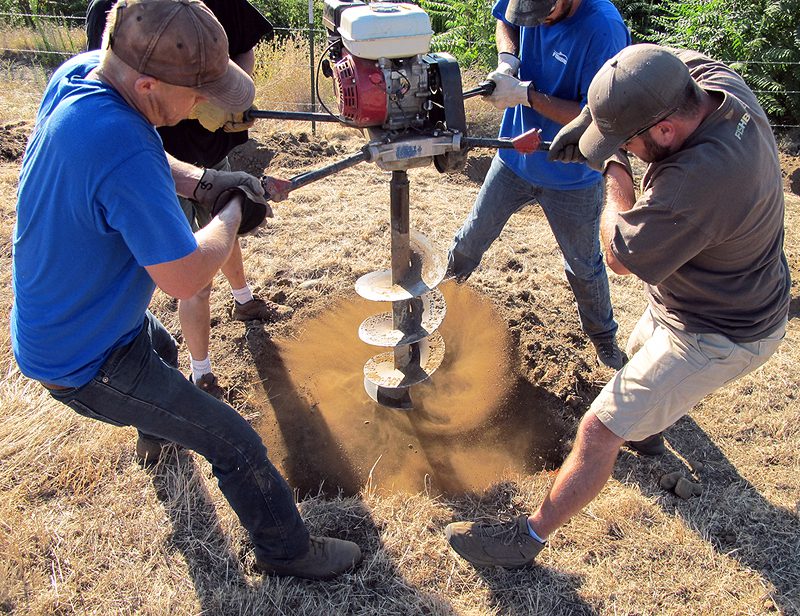Monday August 22, 2011

Sometimes conservation biology requires brute force… FISHBIO biologists and technicians are hard at work preparing planting holes for native riparian trees and shrubs. As part of a floodplain enhancement project along the Stanislaus River we are removing non-native invasive vegetation and replacing it with native species like elderberry (Sambucus nigra), sandbar willow, Freemont cottonwood (Populus freemontii), white alder (Alnus rhombifolia), Oregon ash (Fraxinus latifolia) and California blackberry (Rubus ursinus). The goals of this project are to enhance the riparian areas and convert the surrounding fallow areas to a more natural state to provide habitat for riparian dependent species. Restoration will reduce forest fragmentation, increase vegetative cover, and create other benefits for terrestrial species within a relatively short time period. For months, cuttings and seedling have been cared for in preparation for planting this fall. Crews have fenced off the restoration area to prevent damage to the new plants and holes prepared for planting. Although the restoration area is adjacent to a river, irrigation will be critical for the first few years while the trees become established. There will be more to come on the challenges of keeping these plants irrigated, healthy and growing.
